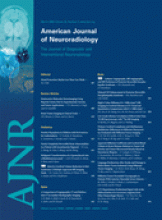G.E. Sarty, ed. Cambridge, UK: Cambridge University Press; 2007, 198 pages, 18 figures, $72.00.
Functional MR imaging (fMRI) is an extremely exciting research topic with enormous potential to improve patient care. The basics of fMRI, however, are very mathematically involved. In addition to in-depth understanding in MR imaging, the user must develop good understanding in statistical analysis. This book presents a comprehensive review of the methods for computing activity maps starting with the basics. The book is organized into 4 chapters plus a basic introduction to the fMRI technique. In the second chapter, the author discusses some image preprocessing techniques of which the user has to be aware because of the use of echo-planar imaging, which produces low signal intensity images and introduces some artifacts. The author touches on ghosting and geometric distortion correction. Also, the author covers image alignment necessary to account for any kind of motion introduced during the study acquisition time. A mathematical model is presented and is discussed in brief.
In the third chapter, the author presents basic experiment design leading to the statistical model in the fourth chapter of the activation maps. The chapter includes the necessary statistical topics such as nonlinear regression and Bayesian methods to satisfy the researcher who prefers to approach this topic from the ground up. Finally, the author presents the general linear model multivariate approaches, principles, and independent component methods, clustering methods leading to the functional connectivity and the connectivity maps.
The fMRI topic is extremely complicated, and it would be very difficult for 1 book to cover all of the major aspects of this subject; however, this book does highlight the principles and basics of this technology. The topic itself is very mathematical, and thus this book is a good representation of the nature of this technique. There are very few images or clinical examples of this application. The book contains a comprehensive list of appropriate references that are current and are published in the leading neuroscience journals. I would recommend this book to audiences with interest in learning the theory behind fMRI or audiences who have this knowledge but wish to find the details in a comprehensive reference.

- Copyright © American Society of Neuroradiology












